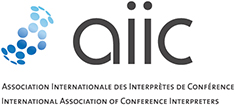Resources

Sign Language Interpretation FAQs

1. What is International Sign Language (IS)?
When deaf people from different language backgrounds meet, they are much more easily able to communicate with each other in comparison to hearing people from different language backgrounds when they first come into contact. This communication is referred to as International Sign (IS). The term IS, rather than International Sign Language or International Signs, indicates that IS does not have full linguistic status but is a translanguaging practice. (Source: WFD)2. Is Sign Language universal?
No, it is not. Sign languages are natural languages that have the same linguistic properties as spoken languages. They have evolved over years in the different Deaf Communities across the world and Europe. Despite widespread opinions there is not one single universal sign language in the world or even in Europe. Just as spoken languages, signed languages vary greatly between countries and ethnic groups. Some countries have more than one sign language or dialect. Countries that have the same spoken language do not necessarily have the same signed language (see for example Germany and Austria). (Source: EUD)3. Can you provide interpretation into English Sign Language?
Each English speaking country has their own national sign language. In the UK British Sign Language (BSL) is used and in the USA it is American Sign Language (ASL). BSL and ASL are not part of the same language family. Other sign languages used in English speaking countries are for example Irish Sign Language, Australian Sign Language and New Zealand Sign Language.4. Is it hard to learn a sign language?
Probably it takes approximately the same amount of time to learn sign language as to learn any other spoken language. What can be challenging is to find a place that offers sign language classes. Check with your national or regional deaf association to find out more.5. Why do most sign language interpreters mostly work simultaneously?
Sign language interpreters primarily work between two modalities: the visual-gestural modality of sign languages and the oral-auditory modality of spoken languages. Since those two modalities do not interfere sign language interpreters mostly work simultaneously.6. Is it possible to interpret any topic from a spoken to a signed language?
Anything said in one language can be delivered into another language, whether it is a signed or spoken language. That is also true for the interpretation from a spoken to a signed language, any topic can be interpreted.7. Can sign language be used in conference interpreting?
Conference interpreters use spoken and/or signed languages. All AIIC members are conference interpreters, engaged in conference interpreting, irrespective of whether they do so by means of spoken languages only, signed languages only, or a combination of both.8. Should I provide interpretation into International Sign Language or a national sign language at my event?
The language interpretation services that you provide at your event should match those of the participants. If it is a national event with participants from one country, then provide interpretation into the national sign language. For example, for an event in Germany you can provide interpretation into German Sign Language (DGS). For an international oriented event, you can consider providing interpretation into International Sign (IS) as well as interpretation into the national sign language of the country where the event is hosted.9. Which sign language should I provide at my event?
When booking a sign language interpreter, the Deaf participant(s) signer must be consulted on their language and interpreter preferences, especially for high-level meetings. Event organisers are responsible to ensure participation in public events by providing interpreting services. Offering this kind of service encourages deaf people to attend and be involved, ensuring equal access and opportunities that are also available to a hearing audience. (Source: EUD)
10. Where can I find conference sign language interpreters in my country?
Sign language interpreters are members of AIIC. You can find an interpreter here). You can also contact your national sign language interpreter association in your country. Another option would be contacting the national deaf association for advice, you can find them via the World Federation of the Deaf (WFD).
11. What are the technical requirements to provide sign language interpretation at an event?
The AIIC Sign Language Network wrote up guidelines for the positioning and web streaming of sign language interpreters at your event. Read the guidelines.
12. Why do you work with sign language interpreters if you are not a sign language interpreter?
Spoken and signed language interpreters mostly work together at multilingual conferences. They work together in the same way as when with other language interpreters. Sign language interpreters work between two signed languages or between a spoken and a signed language. In the latter, sign language interpreters interpreting into a spoken language provide the relay for the spoken language interpreter colleagues and vice versa. Sign and spoken language interpreters might be less familiar in working in the same setting, therefore it is recommended to clarify the interpreting process and the setup before the start of the event.
13. Why do hearing people also need a sign language interpreter?
Communication goes both ways. If hearing people who do not know a sign language wish to understand what their deaf interlocutors say, they will need interpretation from the signed language into their spoken language.14. Why do sign language interpreters tend to wear dark clothing?
Sign language interpreters do not always wear dark colours. It is important to wear clothing that contrasts with the interpreter’s skin tone because this is visually easier to view.15. Can sign language interpreters read Braille?
Braille is a portrayal of print, and is not related to sign languages. Therefore sign language interpreters are not trained in braille. Some sign language interpreters are trained and qualified to interpret into a tactile form of sign language for deafblind persons.
Category: Sign Language
Date Posted: December 12, 2023
Date Posted: December 12, 2023

